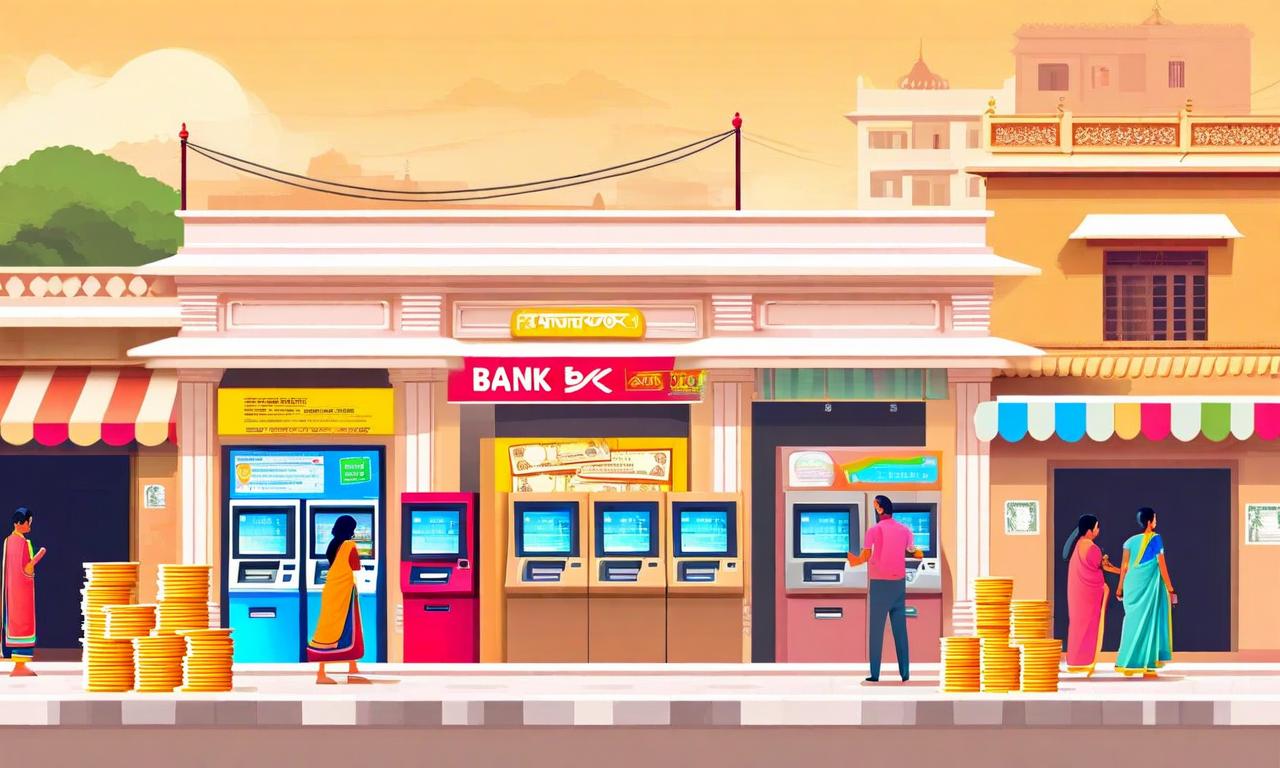Small Finance Banks Face Microfinance Stress as ESAF Reports Significant Losses
ESAF Small Finance Bank, along with peers Suryoday and Utkarsh, is experiencing significant challenges in its microfinance portfolio. Approximately 20% of their microloan portfolios are at risk, with ESAF's portfolio at risk standing at 19.73%. ESAF sold ₹362 crore worth of loans to asset reconstruction companies and wrote off ₹371 crore in the June quarter, resulting in reported losses. The bank's gross Non-Performing Asset ratio is 7.48%. CareEdge lowered ESAF's Tier 2 bonds rating to 'A-/negative'. Despite these challenges, ESAF's financial performance shows revenue growth of 51.73% and net profit increase of 37.22% year-over-year.

*this image is generated using AI for illustrative purposes only.
Small finance banks in India are grappling with mounting pressure in their microfinance operations, with ESAF Small Finance Bank (ISIN: INE949L01017) among those facing significant challenges. Recent data reveals a concerning trend in the microfinance sector, particularly affecting ESAF and its peers.
Microfinance Portfolio at Risk
According to data from Sa-Dhan, approximately 20% of the microloan portfolios of three small finance banks - ESAF, Suryoday, and Utkarsh - are currently at risk. As of June-end, the portfolios at risk for more than 30 days stood at:
| Bank | Portfolio at Risk |
|---|---|
| ESAF | 19.73% |
| Suryoday | 22.76% |
| Utkarsh | 23.23% |
This high-risk exposure is largely attributed to the banks maintaining a 45-55% share of unsecured microloans in their portfolios.
ESAF's Financial Struggles
ESAF Small Finance Bank has been particularly hit hard by these challenges. In the June quarter, the bank:
- Sold ₹362.00 crore worth of loans to asset reconstruction companies
- Wrote off ₹371.00 crore
These actions have significantly impacted the bank's financial performance, resulting in reported losses for the period.
Asset Quality Deterioration
The asset quality of these small finance banks has seen a marked decline:
- ESAF's gross Non-Performing Asset (NPA) ratio stood at 7.48%
- Utkarsh's gross NPA ratio increased to 11.40% from 9.40% in the previous quarter
- Suryoday reported a gross NPA of 8.50%
Rating Downgrades
The financial stress has not gone unnoticed by rating agencies:
- CareEdge lowered ESAF's Tier 2 bonds to 'A-/negative'
- Icra downgraded Utkarsh's subordinated debt by two notches to 'A/negative'
Looking Ahead
The continued asset quality deterioration and high credit costs are expected to impact profitability for these banks in the September quarter and potentially for the full fiscal year. This situation underscores the challenges faced by small finance banks in managing their microfinance portfolios amidst economic uncertainties.
ESAF's Financial Performance
Despite the current challenges, it's worth noting ESAF's financial trajectory over the past few years:
| Metric (₹ in crore) | FY 2025 | FY 2024 | YoY Change |
|---|---|---|---|
| Revenue | 18,590.00 | 12,251.80 | 51.73% |
| Net Profit | 2,105.90 | 1,534.70 | 37.22% |
| EPS (₹) | 28.32 | 22.98 | 23.24% |
While the bank has shown strong growth in revenue and profitability over the past year, the current microfinance stress poses significant challenges for its future performance. Investors and stakeholders will be closely watching how ESAF and other small finance banks navigate these turbulent times in the microfinance sector.
Historical Stock Returns for AU Small Finance Bank
| 1 Day | 5 Days | 1 Month | 6 Months | 1 Year | 5 Years |
|---|---|---|---|---|---|
| -0.42% | -0.03% | +5.97% | +23.07% | +78.51% | +125.69% |


















































